
The Universal Design for Learning guidelines (UDL) aim to help schools create inclusive experiences that support successful student learning based on universal design principles. This publication guides the development of skills and knowledge for teachers, academic support specialists, and managers to apply UDL principles. It includes examples from the education and self-education processes, strategies for eliminating barriers, and practical questions for self-evaluation and reflection.
The Situation
The education ecosystem has been experiencing the need for change due to the shifting sociocultural landscape in the country. Universal Design Principles, which focus on inclusivity and possibilities for all, have primarily been applied in the infrastructure domain, while educational processes have remained untouched. Issues such as unclear terminology, fragmented stakeholders, lack of expertise, systemic bottlenecks, and more have contributed to this situation of uncertainty. This context encouraged The Millennium Schools Programme of the Ministry of Education, Science and Sport to invite our agency to facilitate the process, from researching the context to designing the framework that brings change in the field of education.
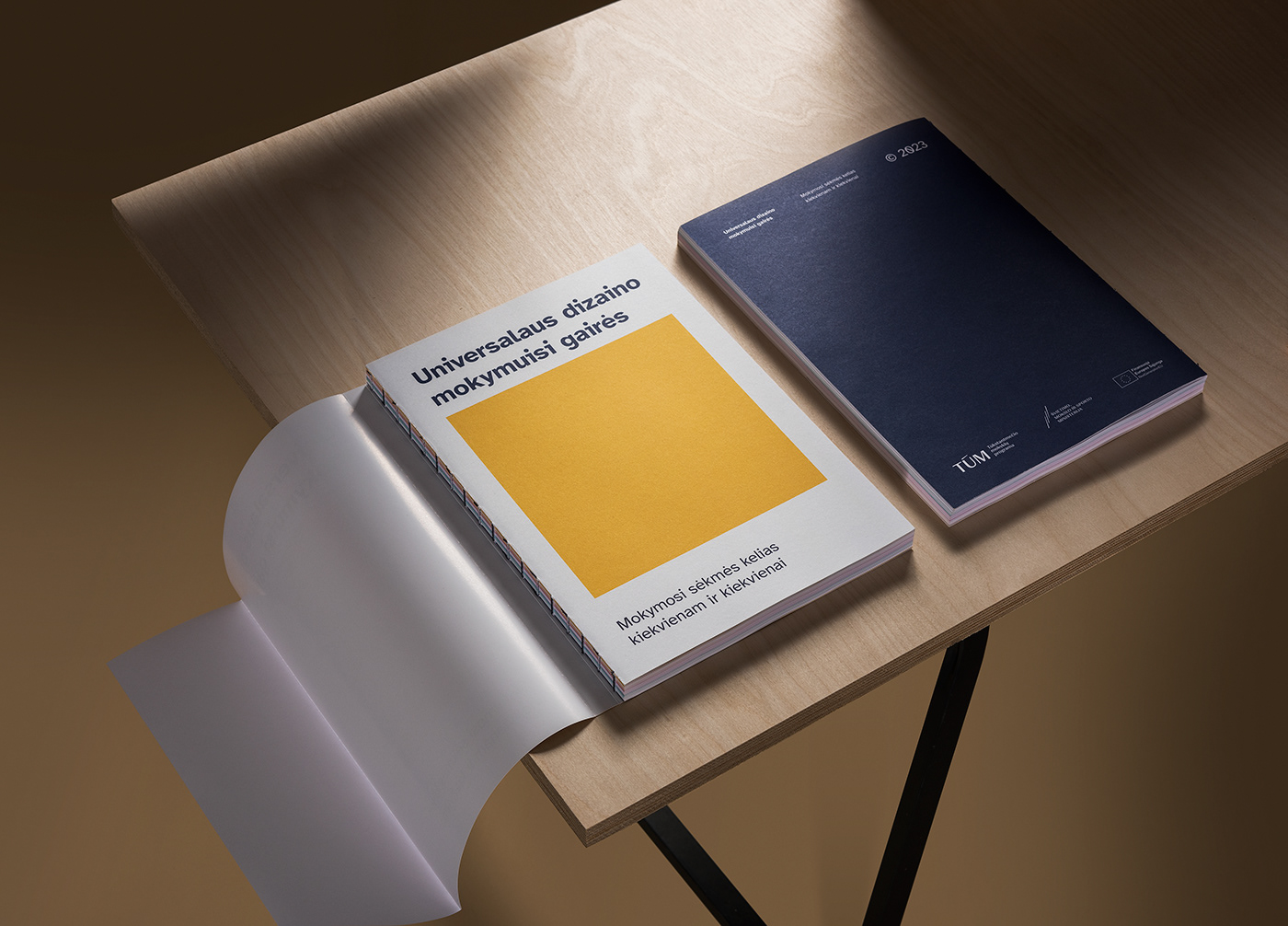
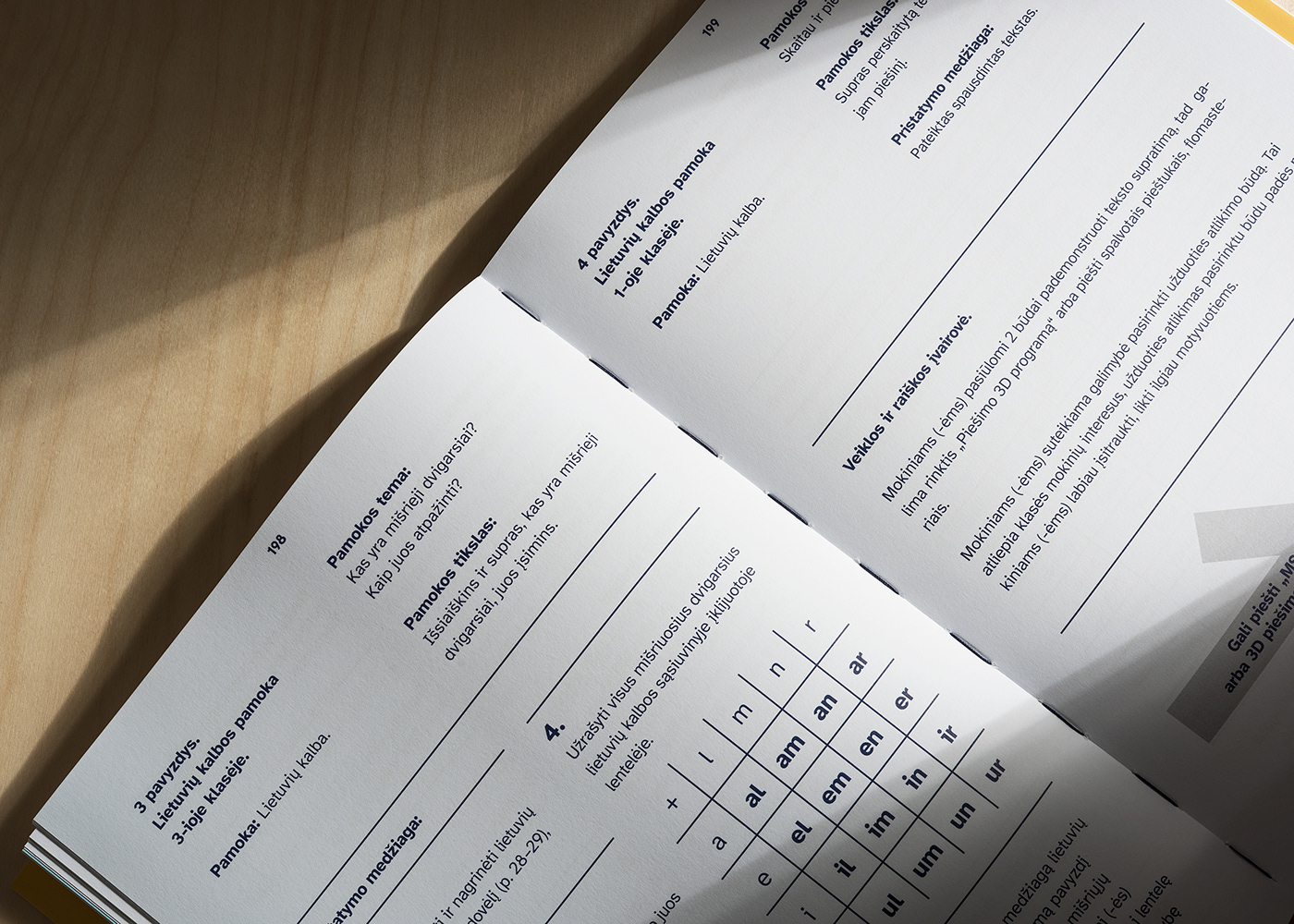
Our teams apply context-thinking—an approach we have fine-tuned through various practical experiences—to solve challenges. In this case, context-thinking was tailored to engage different stakeholders and reveal the shared vision they have for improving education together and putting these principles into a framework for guidelines. Moreover, the insights gathered from various workshops served as the foundation for the guidelines design system.
The UDL development process was highly participative and inclusive. The guidelines were co-developed by prominent experts in the field of education, including representatives from governmental institutions, NGOs, academics, and teachers. The process was facilitated by The Critical, a research and design agency, and comprised five phases:
01.
Onboarding and Briefing Experts. Experts were brought on board and briefed about the project.
02.
Co-Creation Sessions. In the three sessions, participants first analysed the challenges of the current educational system in Lithuania, specifically addressing inclusivity, accessibility, diversity, and the application of Universal Design Principles in education. Secondly, they drafted a common vision for the UDL guidelines, outlining its goals, target groups, functions, main themes, and criteria for content development and book design.
03.
Content Development. Following the co-creation sessions, experts collaborated to create the content for the guidelines.
04.
Content Editing. Editing the content of the guidelines to ensure an intuitive, seamless and smooth user experience.
05.
Visual Design of the Guide. The content developed was then shaped into a book, following Universal Design Principles.

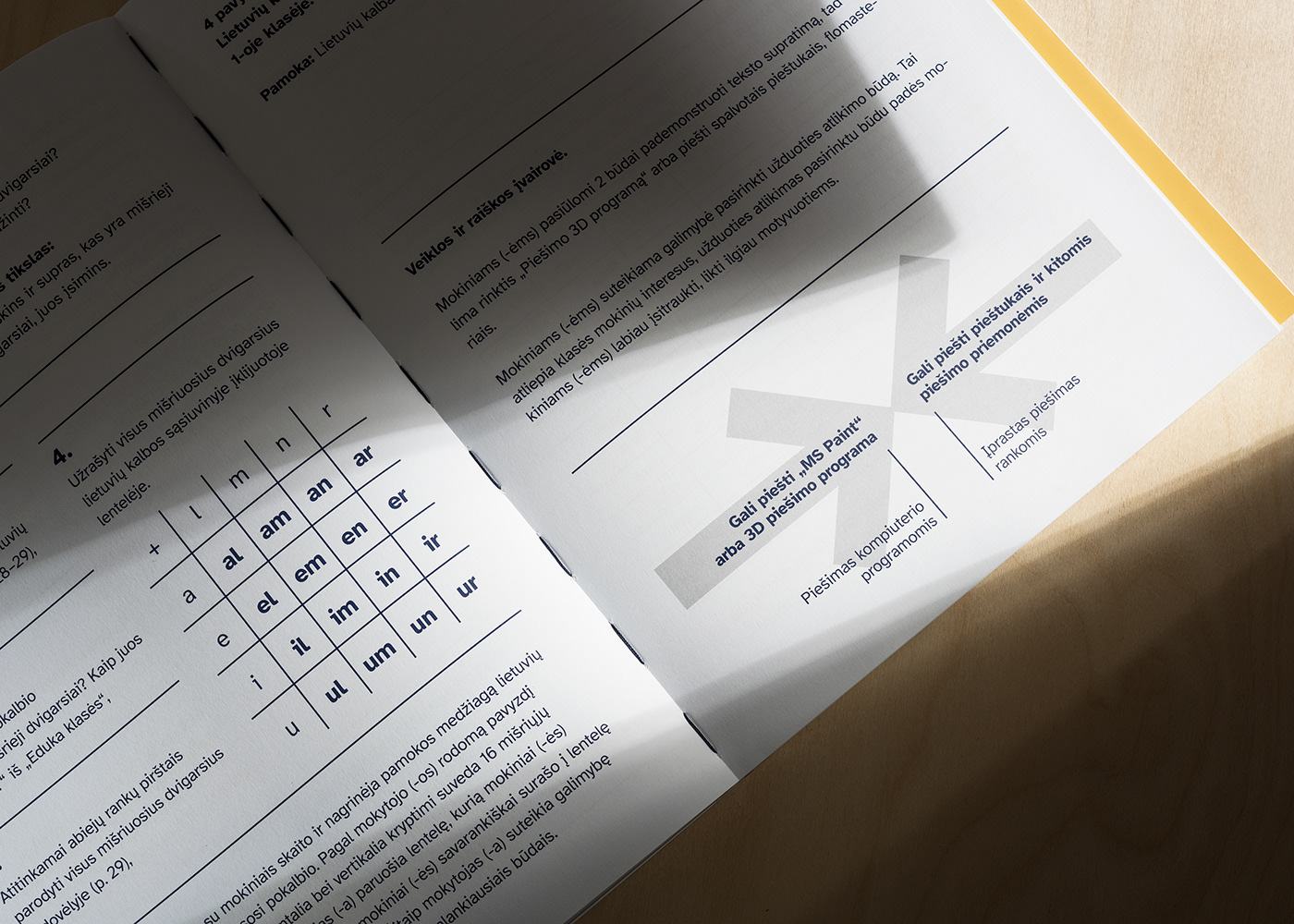
Design System
Everyone remembers information differently. For some, it is easier to remember textual information; for others, it is easier to remember a colour or a visual. Therefore, a design system had to apply the Universal Design Principles: inclusivity, simplicity, and clarity through layout composition, colour schemes, graphic elements, and typography.
The square chosen as the main symbol of the universal design metaphor is the primary geometric shape from which all other forms arise; rounding the corners is a circle; minus one corner is a triangle, and so on. It is also a symbol of simplicity, clarity, and universality. These geometric shapes accompany each section’s colour and help them distinguish the themes of the publication more clearly.
The editorial guide has five chapters, each distinguished by a unique geometric shape that runs through the entire chapter. These shapes symbolise simplicity and clarity and create a contrast between the academic content. Furthermore, the shapes transform into tables, graphs, and spaces for photos, making the guide easy to read and understand. The design system colour palette creates additional differentiation and proper contrast for all design elements. Typeface Atkinson Hyperlegible focuses on letterform differences, which improves character recognition and readability. Some illustrations are also created and selected from Adobe Stock to complement and visualise the content for inclusiveness of gender, race, and other social equality.
Such decisions have helped to make the guidelines more suitable not only for people with visual or mental impairments but also for most other needs and became a tangible example for applying these principles.
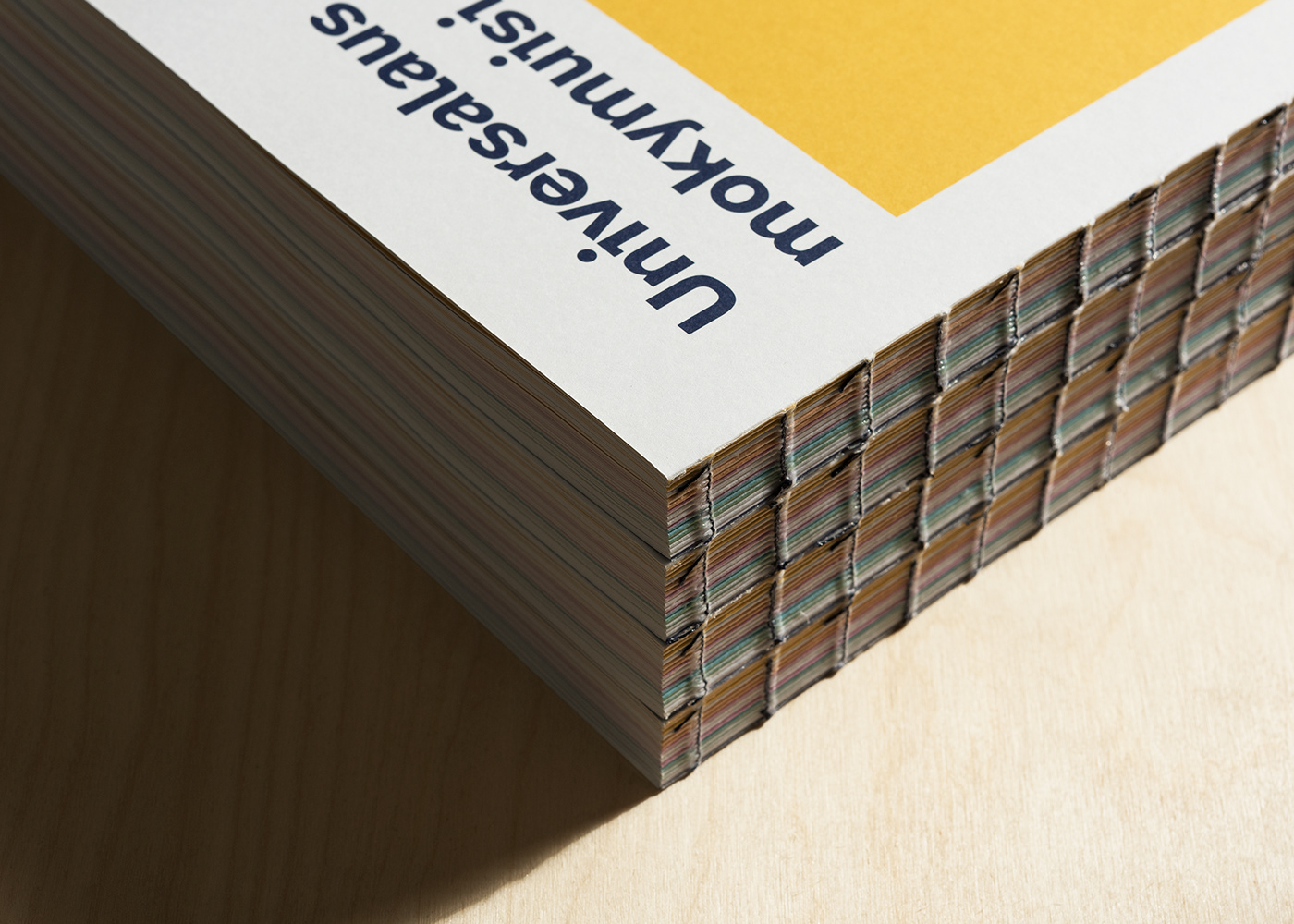

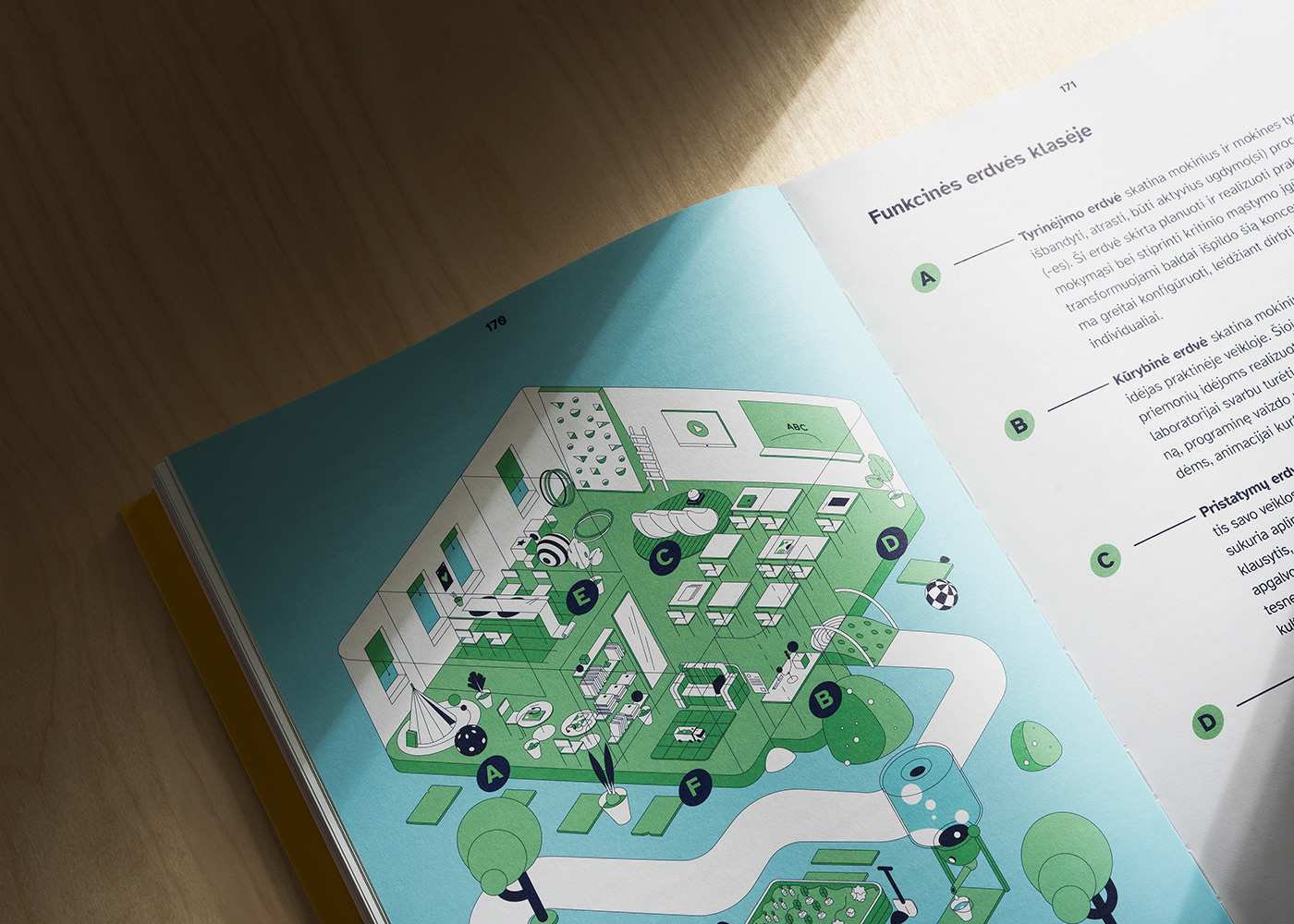
Print and Digital
The Principles of Universal Design also influenced the structure of the editorial’s composition and typography hierarchy, and the publication was created for convenient use both in the digital space and in print format, taking into account maximum visibility for all people. The composition of the layout in the digital version is created as a single page, not forgetting that also it will be seen in the two-page / spread layout.
The UDL guide was bound in a manner that facilitated effortless scanning and copying, with all pages lying flat without any gaps. The digital version displayed a single-page view with spacious margins, which could be easily printed in schools and other institutions if required.
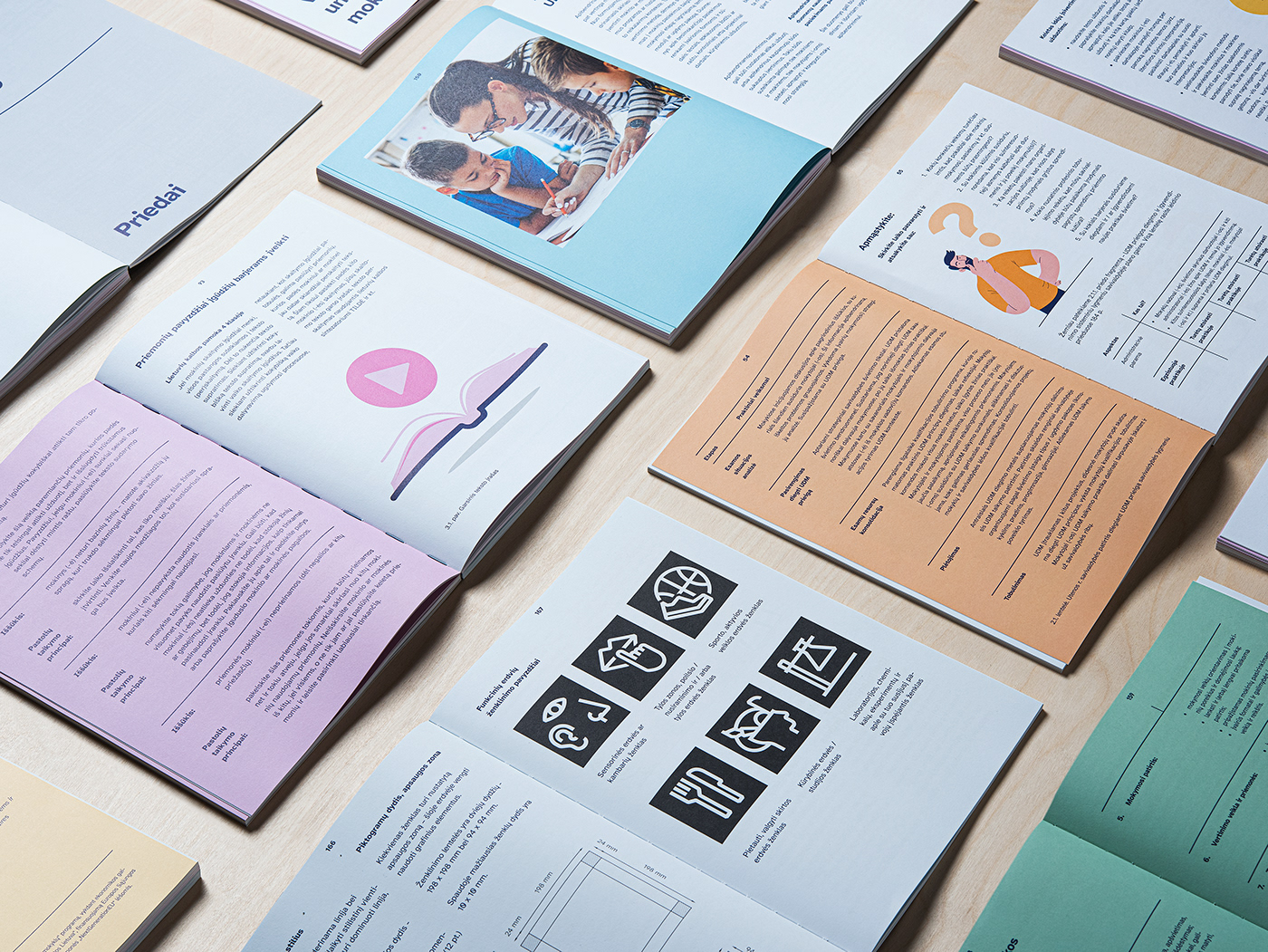
The Event
Finally, these guidelines have been presented to the municipal education departments, school administrations and teachers during a special event. After this event, the publication reached those interested in practising principles and methods of Universal Design for Learning.

The Universal Design for Learning guidelines ©2023
Client:
THE MILLENNIUM SCHOOLS PROGRAMME
OF THE MINISTRY OF EDUCATION, SCIENCE AND SPORT
Content Guidelines & Design: THE CRITICAL
Case Photos: KERNIUS PAULIUKONIS packshot.lt
Event Photos: THE MILLENNIUM SCHOOLS PROGRAMME
Editor-in-Chief: AUKSĖ GASPERAVIČIENĖ (VITAE LITERA)
Editor-Copywriter: MONIKA REPČYTĖ
Design Director: JONAS LIUGAILA, PAULIUS BUDRIKIS
Research and Strategy: EGLĖ VITKUTĖ, JONAS LIUGAILA
Tone of Voice: JONAS LIUGAILA, MONIKA REPČYTĖ
Design, Illustrations: REGINA TEREKĖ, ZIGMAS VAGONIS
Case Motion: ZIGMAS VAGONIS, MIGLĖ LAPIENYTĖ
Tone of Voice: JONAS LIUGAILA, MONIKA REPČYTĖ
Design, Illustrations: REGINA TEREKĖ, ZIGMAS VAGONIS
Case Motion: ZIGMAS VAGONIS, MIGLĖ LAPIENYTĖ
Technical Design: ŽYMANTAS ABROMAITIS
Project Management: JURGITA BABILČIŪTĖ
Printing: KOPA PRINTING HOUSE
Commissioning Editor: KAROLINA ZAKARAUSKAITĖ
Experts & Text Authors: DR. RASA NEDZINSKAITĖ-MAČIŪNIENĖ, VITALIJA BUJANAUSKIENĖ,
RASA JUODVALKIENĖ, ARTUR ADAM MARKEVIČ, ASTA LAUCIUVIENĖ, ANA PAVILOVIČ- JANČIS, INGA TUTKIENĖ,
AUKSĖ VYŠNIAUSKIENĖ, DR. MARIUS PRANAS ŠALIAMORAS
AUKSĖ VYŠNIAUSKIENĖ, DR. MARIUS PRANAS ŠALIAMORAS
Text Editor: MONIKA REPČYTĖ, AUKSĖ GASPERAVIČIENĖ (VITAE LITERA)






